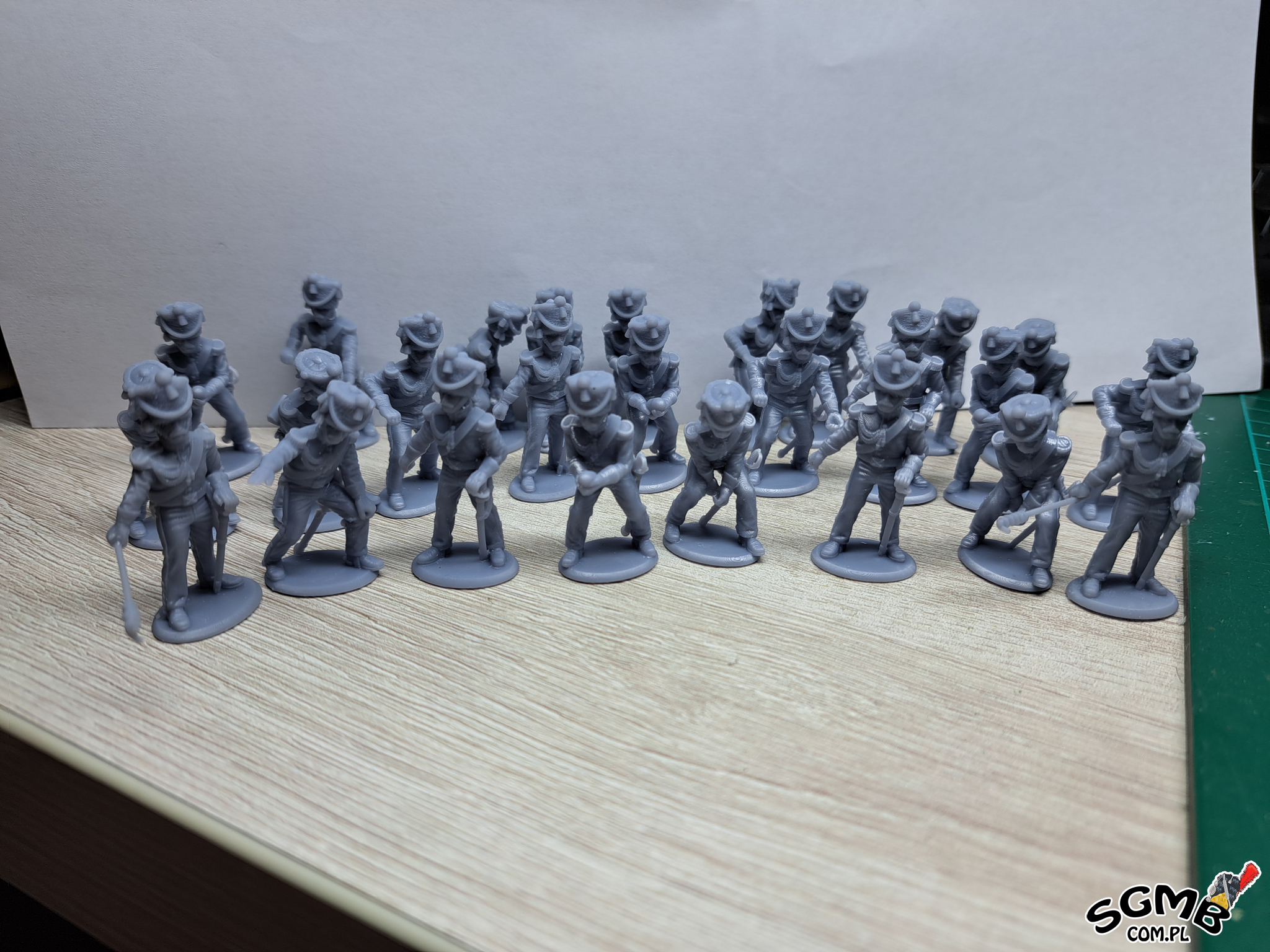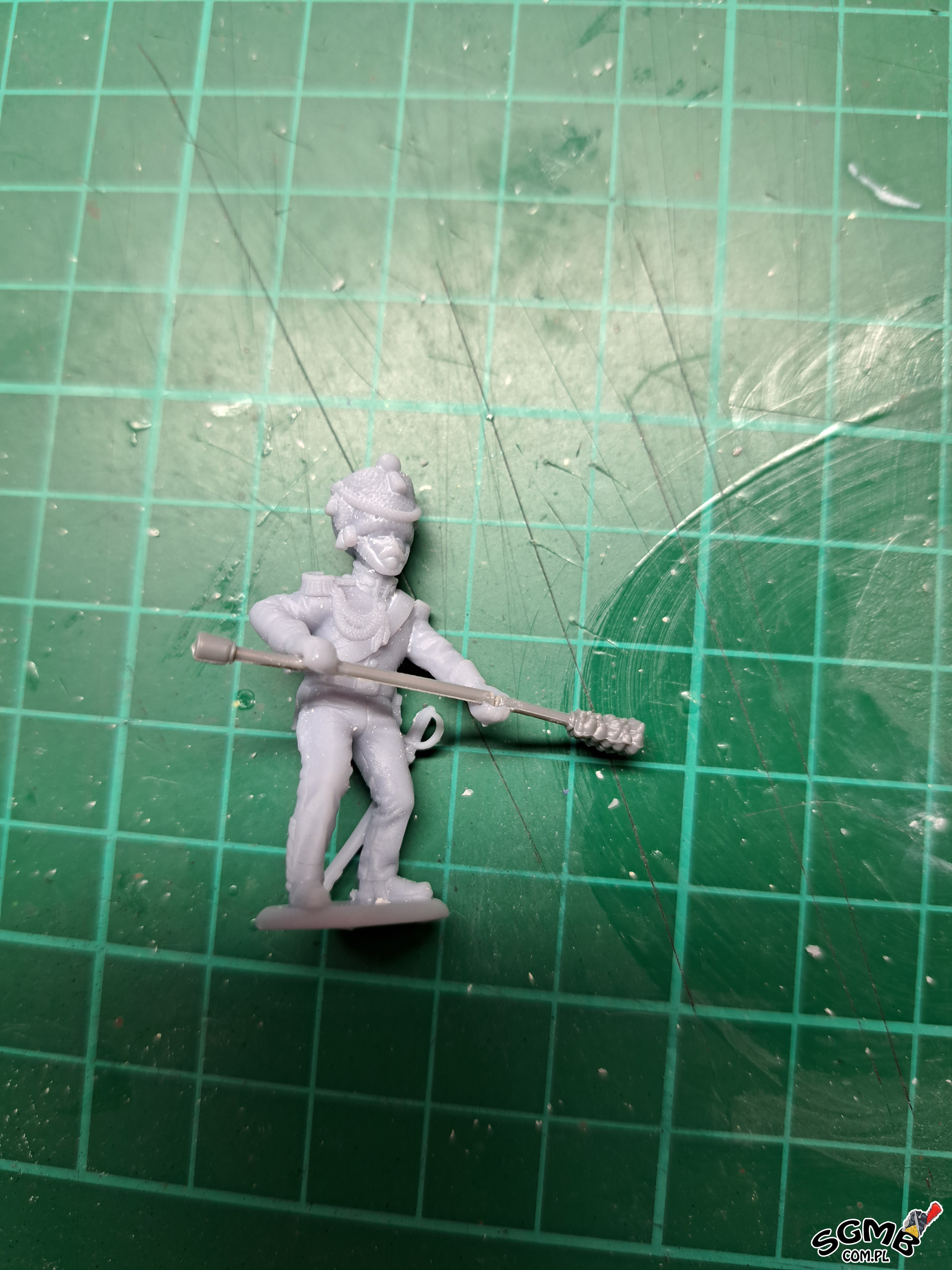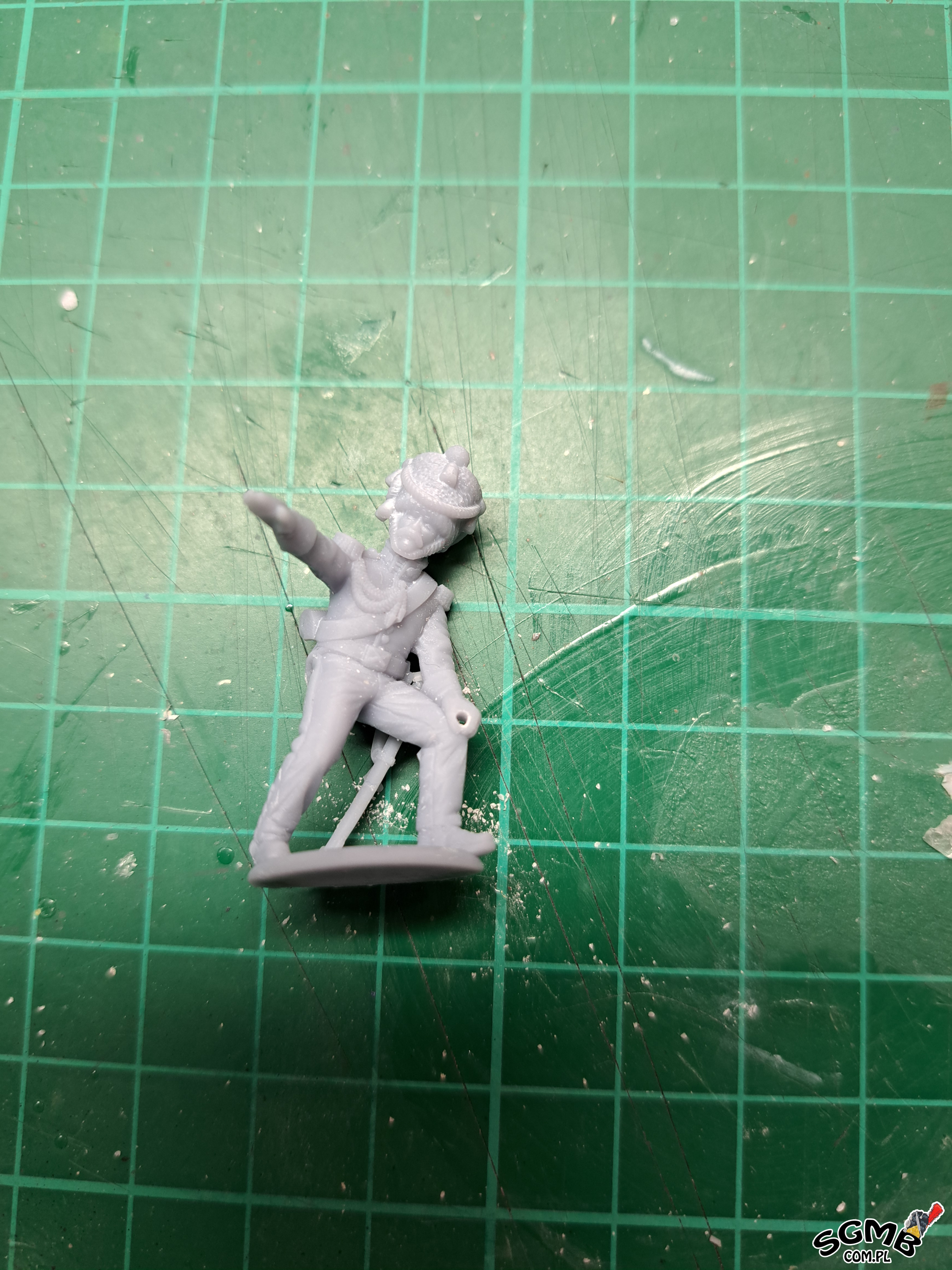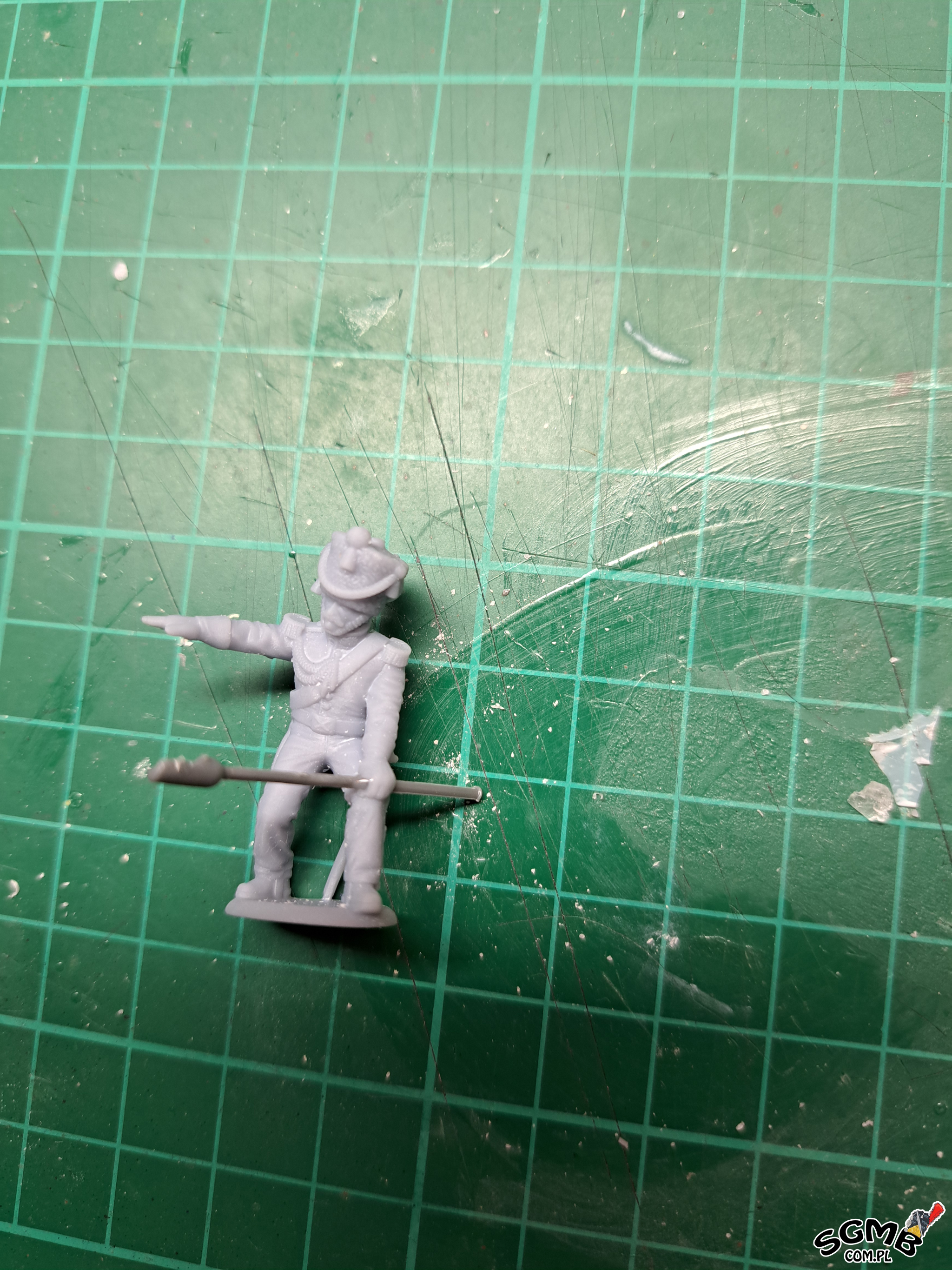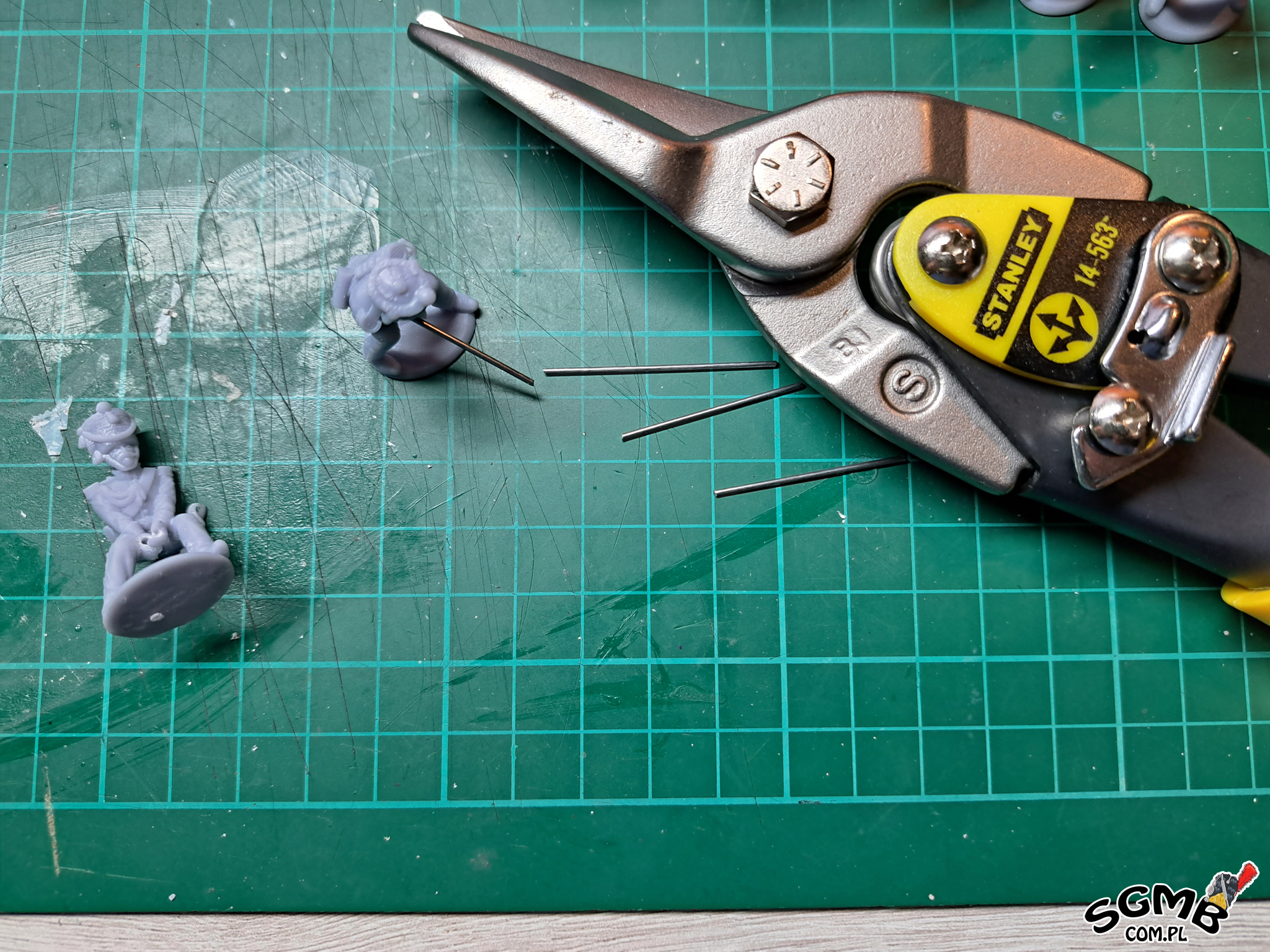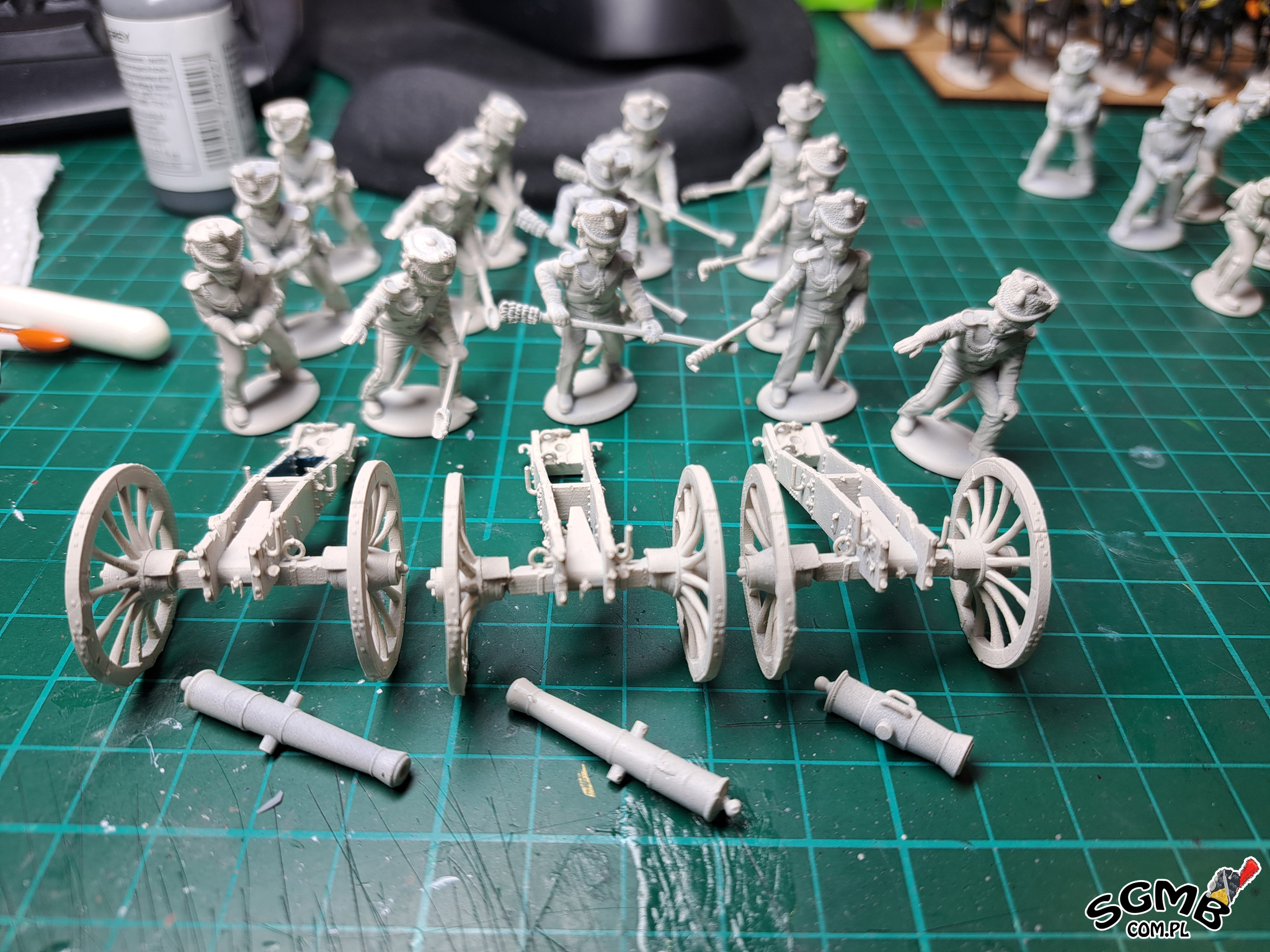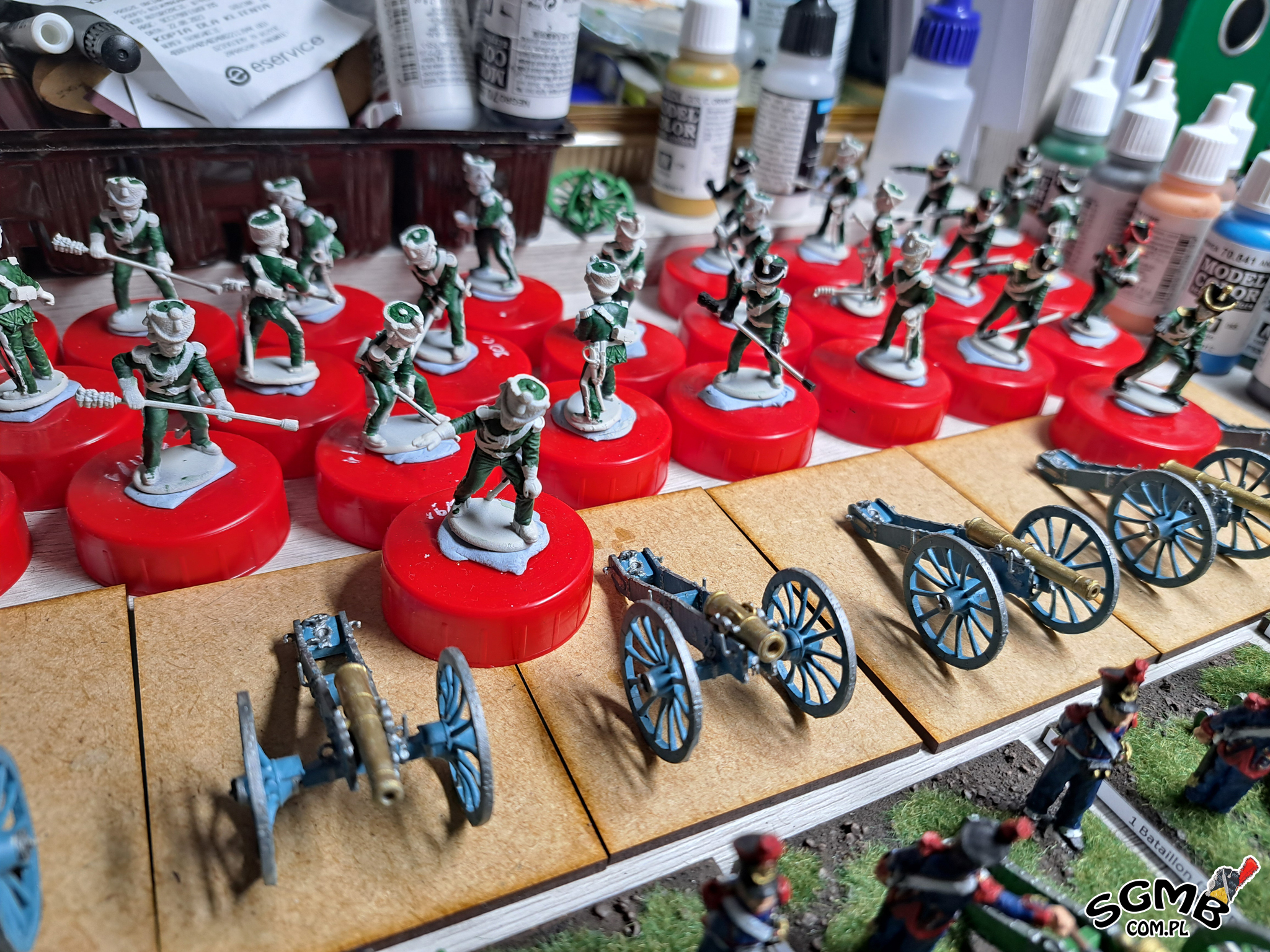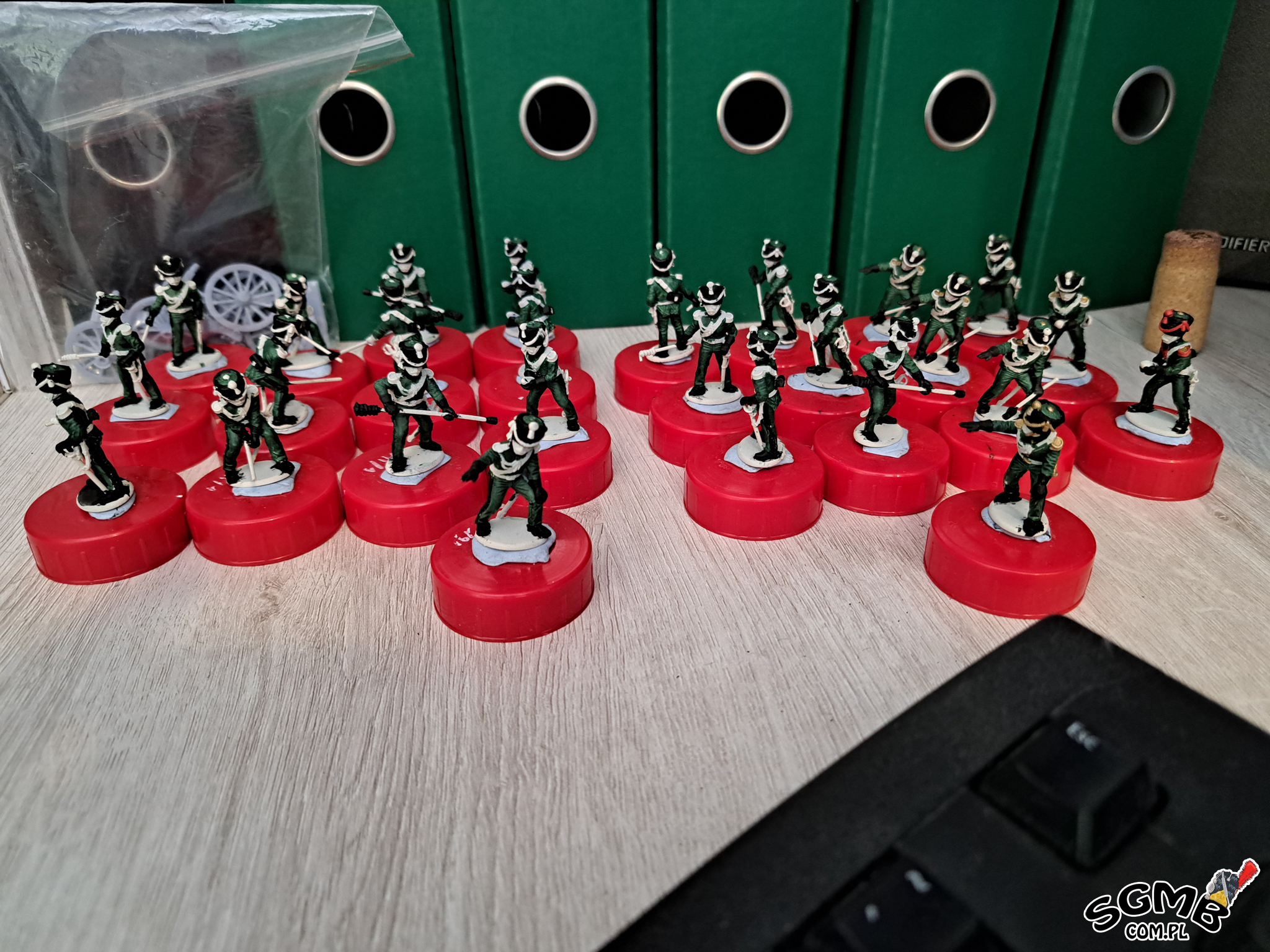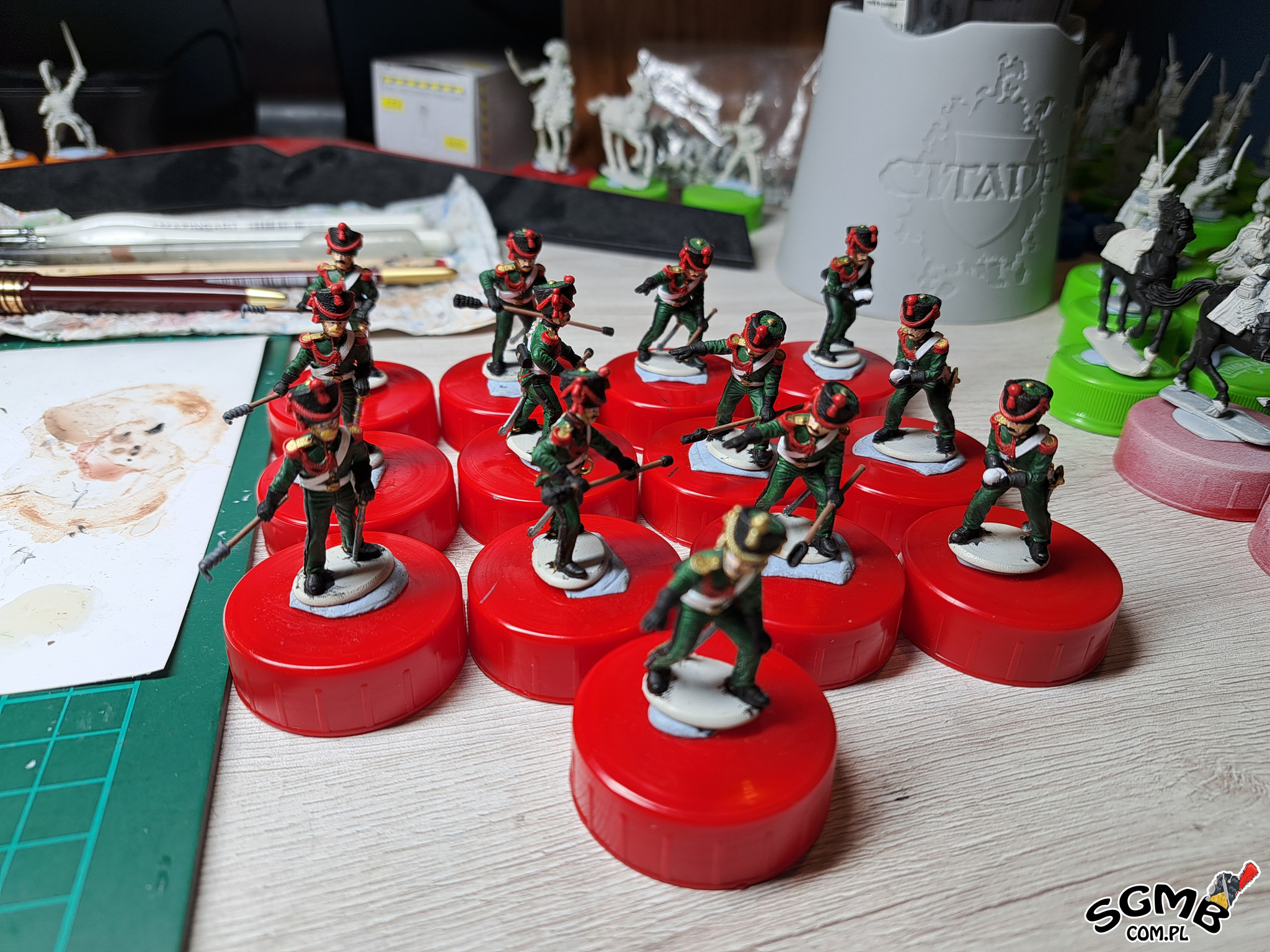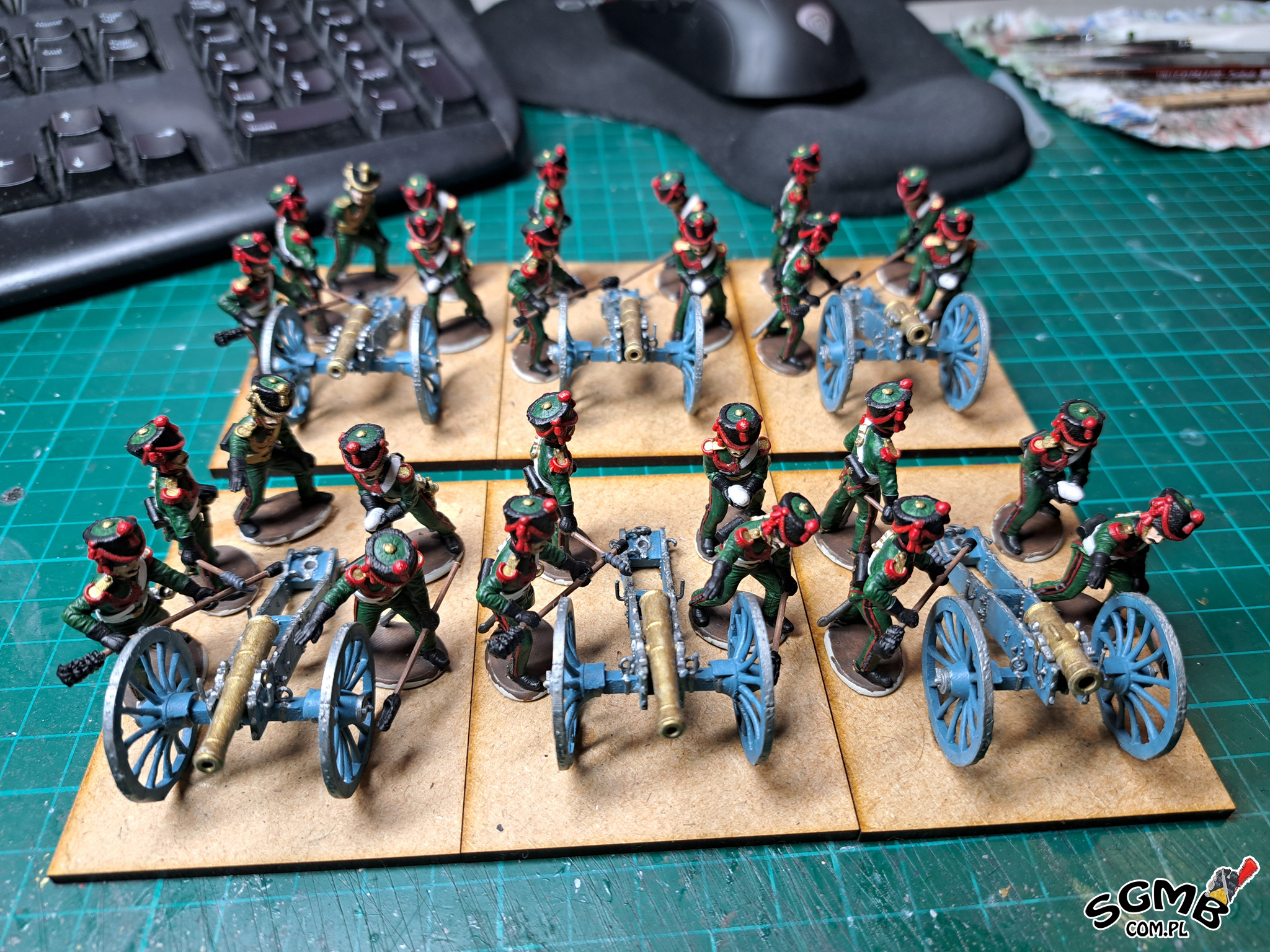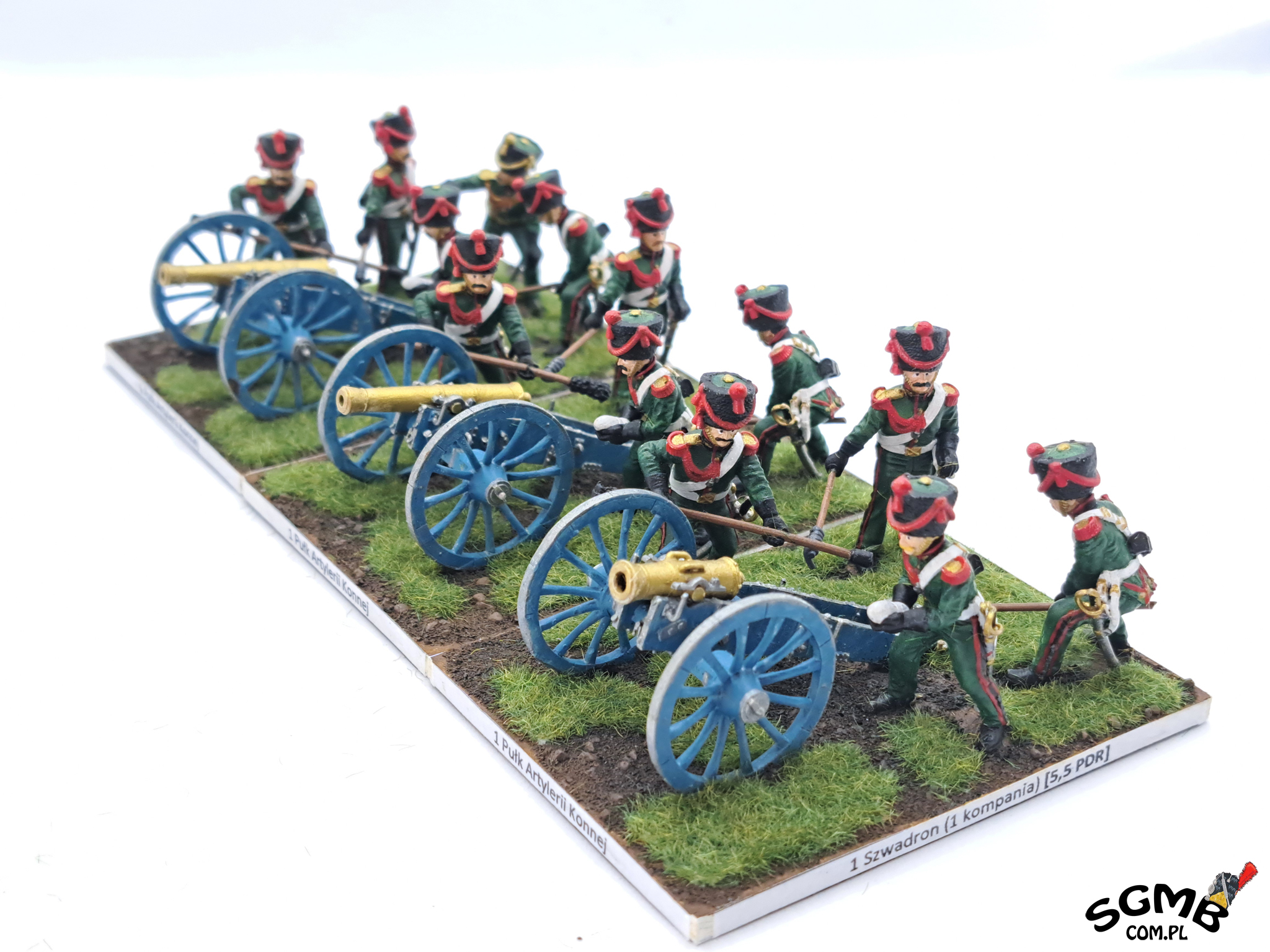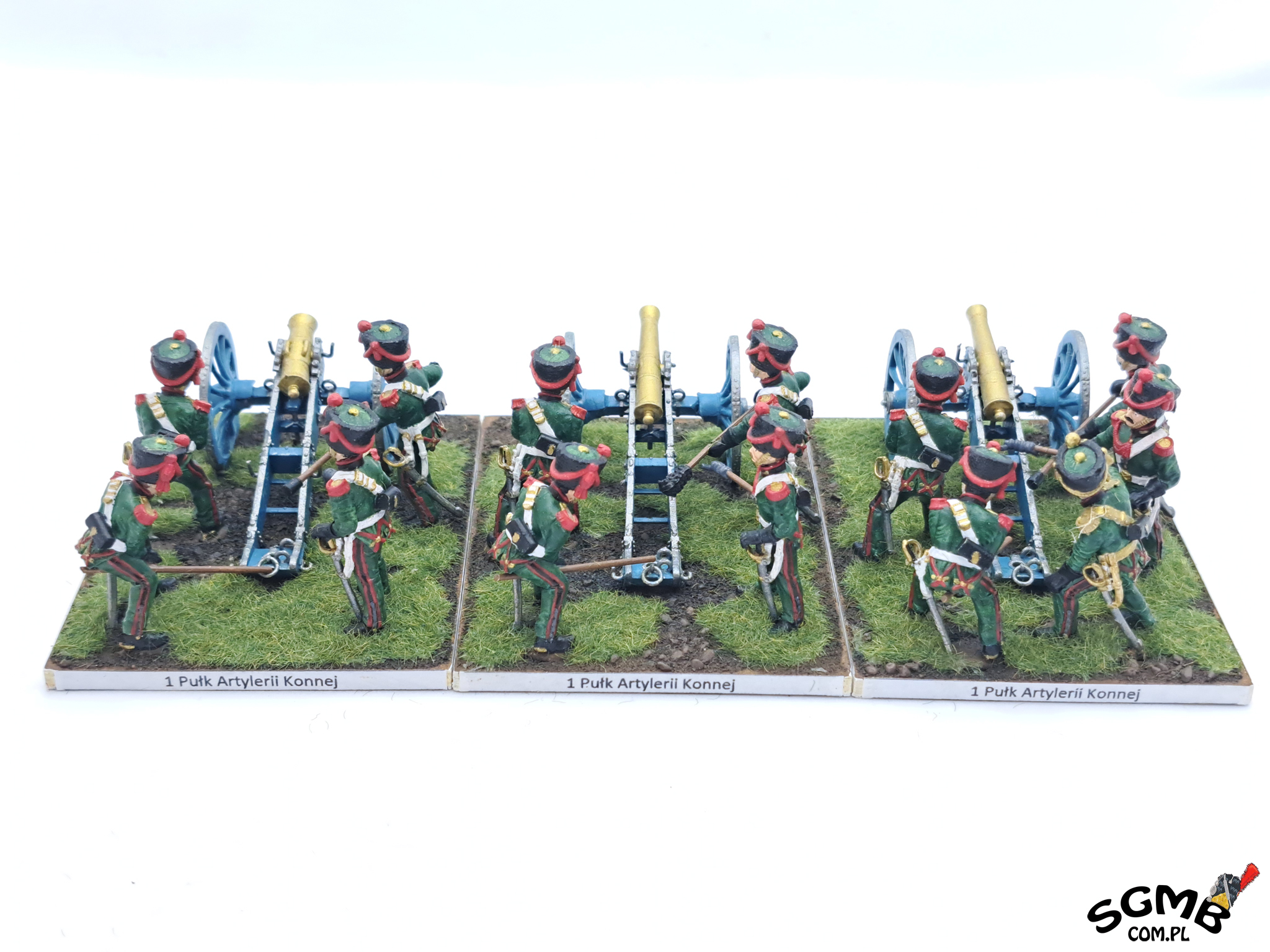[21.06.2025] Wojny Napoleońskie 28mm - Księstwo Warszawskie [1813]
|
1 Pułk Artylerii Konnej - 1 Kompania.
Artyleria Konna Księstwa Warszawskiego zrobiona na kampanię 1812 roku. |
1 Regiment Horse Artillery - 1 Company.
Horse Artillery Duchy of Warsaw infantry made for 1812 year Campaign. |
1szy Pułk Artylerii Konnej - 1 kompania [1812]
|
Artyleria konna Księstwa Warszawskiego została utworzona dekretem Księcia Warszawskiego z 1 grudnia 1808 jako bateria artylerii konnej kosztem hrabiego Włodzimierza Potockiego.
2 bateria artylerii konnej została zaś sformowana w 1809 przez Romana Sołtyka. Dekretem z 30 marca 1810 utworzono pułk artylerii konnej z dwóch szwadronów. Liczył on 691 żołnierzy, 382 koni jezdnych i 520 pociągowych. Kompania walczy w kampanii 1809 roku. W 1812 wraz z załogą Twierdzy Gdańsk tworzy tzw. Dywizję Gdańską. Zostaje podporządkowana I Korpusowy Marszałka Davouta. Po rozpoczęciu kampanii 1812 wyrusza przez Królewiec i po przekroczeniu Niemna w Tylży wraz z całą Dywizją zostaje podporządkowana X korpusowi. Pod koniec lipca dotarła do Dyneburga. W sierpniu i wrześniu toczyła szereg potyczek z oddziałami piechoty rozyjskiej i jazdy kozackiej. Z początkiem października przkierowany w okolice Rygi. Toczyła walki pod Gransenburgiem, a potem pod Neugutem. W listopadzie i grudniu biła się pod Walhoff, po czym otrzymała rozkaz odwrotu. Jako że był to kierunek pomocniczy i podczas odwrotu nie brak było większych bitew zachowała większość stanu osobowego. Dywizja wycofała się z Kurlandii 18 Grudnia, walczyła pod Tylżą 28 i 31 grudnia 1812. 3 stycznia 1813 wraz z całym korpusem opuściła Królewiec i 13 stycznia wkroczyła do twierdzy Gdańskiej. Od połowy stycznia Dywizja Gdańska wraz z dwiema Dywizjami Francuskimi i częścią Korpusu Bawarskiego broniła Twierdzy Gdańskiej. Twierdza broniła się dzielnie odpierając szturmy i organizując wypady. Podczas obrony twierdzy kompania zyskała miano "baterii piekielnej". Twierdzy Gdańskiej broniono do 29 listopada kiedy rozpoczęły się rozmowy kapitulacyjne. Warto wspomnieć tu jeszcze o działach. Wszystkie kompanie artylerii Księstwa posiadały zdobyte przez Francję w trakcie kampanii lat 1806-1807 działa Pruskie przekazane Księstwu Warszawskiemu. Na wielu obrazach działa te ukazywane są w malowaniu podobnym do dział Francuskich, czyli na zielono. Jednak możliwe jest, jako że nie ma żadnych źródeł, iż nie były one przemalowywane i działa te miały dalej malowanie Pruskie, czyli szaro-niebieskie. |
The horse artillery of the Duchy of Warsaw was created by the decree of the Duke of Warsaw on 1 December 1808 as a horse artillery battery at the expense of Count Włodzimierz Potocki.
The 2nd horse artillery battery was formed in 1809 by Roman Sołtyk. By the decree of 30 March 1810, a horse artillery regiment was created from two squadrons. It numbered 691 soldiers, 382 horse horses and 520 draft horses. The company fought in the 1809 campaign. In 1812, together with the crew of the Gdańsk Fortress, it formed the so-called Gdańsk Division. It was subordinated to Marshal Davout's I Corps. After the beginning of the 1812 campaign, it set off through Königsberg and after crossing the Niemen in Tilsit, together with the entire Division, it was subordinated to the X Corps. At the end of July, it reached Daugavpils. In August and September, it fought a number of skirmishes with Russian infantry and Cossack cavalry units. At the beginning of October, it was redirected to the vicinity of Riga. It fought at Gransenburg and then at Neugut. In November and December, it fought at Walhoff, after which it received an order to retreat. As this was an auxiliary direction and there were many major battles during the retreat, it retained most of its personnel. The division withdrew from Courland on December 18, fought at Tilsit on December 28 and 31, 1812. On January 3, 1813, it left Königsberg with the entire corps and entered the Gdańsk Fortress on January 13. From mid-January, the Gdańsk Division, together with two French Divisions and part of the Bavarian Corps, defended the Gdańsk Fortress. The fortress defended itself bravely, repelling assaults and organizing raids. During the defense of the fortress, the company gained the nickname "hell battery". The Gdańsk Fortress was defended until November 29, when capitulation talks began. It is worth mentioning the cannons here. All the artillery companies of the Duchy had Prussian cannons captured by France during the campaign of 1806-1807 and transferred to the Duchy of Warsaw. In many paintings these cannons are shown in a similar painting to the French cannons, i.e. green. However, it is possible, as there are no sources, that they were not repainted and these cannons continued to have the Prussian painting, i.e. gray-blue. |
Materiały 1szy Pułk Artylerii Konnej - 1 kompania [1812]
| Figurki | Zestaw |
| 13 figurek | 3D STL Files - [Grand Duchy of Warsaw - Horse, Foot & Regimental Artillery 28mm (Rafał Polkowski)] |
| 3x Działo | 3D STL Files (Jurand Dekowski) |
| Podstawki | Wymiary |
| MDF | 3x 60x80x3 1x znacznik strat |
| Podstawki | Materiał |
| Kamyczki - Stones | BMPO50 Black Sand 1-1,5mm (Battle-Models) |
| Kamyczki - Stones | BMPO20 Black Sand 0,05-0,3mm (Battle-Models) |
| Trawa - Grass | 08150 Streugras "Frühlingswiese" (Noch) |
| Farba - baza - Paint - base | 70.941 Burnt Umber (Vallejo) |
| Farba - rozjaśnienie - Paint - lightening | 70.825 Ger.C. pale. Brown (Vallejo) |
| Farba | Miejsce |
| 70.825 Ger. C. Pale Brown (Vallejo) | Sprzęt artyleryjski - Artillery equipment |
| 70.836 London Grey (Vallejo) | Sprzęt artyleryjski - Artillery equipment |
| 50% 70.841 Andrea Blue 50% 70.992 Neutral Grey (Vallejo) |
Działo - Gun |
| 50% 70.970 Deep Green 50% 70.823 Luftwaffe Cam. Green (Vallejo) |
Mundur, Spodnie, Kolbak - Uniform, Trousers, Colpak |
| 70.992 Neutral Grey (Vallejo) | Spodnie - Trousers |
| 70.878 Old Gold (Vallejo) | Działo, Szabla, Epolety, Sznury - Gun, Sabre, Epolets, Cords |
| 70.865 Oily Steel (Vallejo) | Szabla, Działo - Sabre, Gun |
| 70.950 Black (Vallejo) | Buty, Colback, Spodnie - Shoes, Kolbak, Trousers |
| 70.951 White (Vallejo) | Mundur - Uniform |
| 70.957 Flat Red (Vallejo) | Mundur, Epolety, Sznury - Uniform, Epaulets, Cords |
| 70.953 Flat Yellow (Vallejo) | Włosy - Hair |
| 70.815 Basic Skin Tone (Vallejo) | Skóra - Skin |
| Flaga | Producent |
| - | - |






























